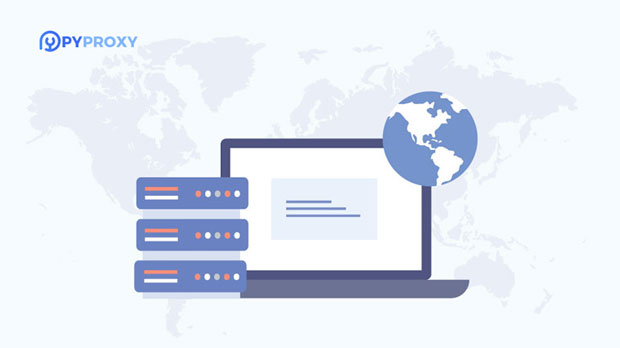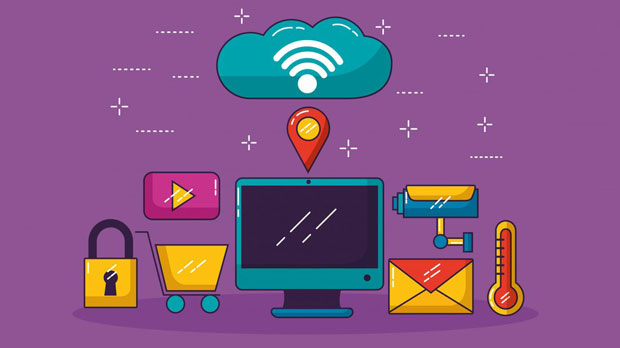In the world of proxy services, businesses and individuals who require seamless internet access from various global locations often look to dynamic proxy solutions. These solutions are especially essential when working across multiple regions for purposes like web scraping, market research, and bypassing geographical restrictions. Netnut and PYPROXY are two prominent services in the dynamic proxy landscape, each offering unique features and varying performance. In this article, we will delve deep into the differences between Netnut and PyProxy, with a particular focus on their performance in switching across multiple regions. Introduction to Dynamic Proxy ServicesDynamic proxies are critical tools for users who need to simulate browsing from different locations, enabling them to mask their true IP addresses. Unlike static proxies, dynamic proxies allow users to rotate IP addresses to appear as if they are accessing the internet from various geographical regions. This is particularly valuable for tasks like web scraping, where switching locations frequently is essential to avoid detection or limitations.The technology behind dynamic proxies involves proxy servers that automatically change their IP addresses, making them highly effective for internet anonymity and overcoming geographic restrictions. Both Netnut and PyProxy offer dynamic proxy solutions, but their approaches, scalability, and efficiency vary significantly, particularly in terms of regional switching. Let’s explore how each performs when it comes to handling regional proxy switching.Netnut: A Flexible Yet Cost-Effective SolutionNetnut is a popular proxy service known for its flexibility and cost-effectiveness, particularly in the context of dynamic proxy switching. Designed to serve a variety of needs, Netnut offers a dynamic proxy pool that allows users to rotate IP addresses based on their requirements. Its main selling points include ease of integration, relatively low pricing, and a strong focus on API access for users who need to automate their proxy switching process.One of the key advantages of Netnut is its ability to support multiple proxy types, including residential, data center, and mobile proxies. This versatility is essential for users operating in different regions, as it ensures the ability to use proxies that are most suitable for the specific task or location. For example, users in Asia may prefer mobile proxies to bypass regional restrictions, while users in North America might opt for data center proxies for speed.However, while Netnut is highly regarded for its ease of use and cost-effectiveness, its performance when switching between multiple regions can sometimes be inconsistent. The quality of the proxies can vary based on the region in question. Some users report that switching between distant regions (e.g., from the US to Europe or Asia) can occasionally result in slow speeds or higher latency. This issue is particularly noticeable for users who require high-speed internet access for tasks like web scraping or data mining.Despite these occasional inconsistencies, Netnut remains an excellent choice for users seeking affordable dynamic proxy solutions. For smaller-scale projects or those with moderate performance requirements, Netnut delivers good value and a relatively seamless regional switching experience.PyProxy: Premium Performance for Global Regional SwitchingPyProxy is a premium proxy service provider that stands out due to its focus on delivering high-performance proxies with global coverage. Unlike Netnut, which relies on a more diverse pool of proxies, PyProxy offers a more exclusive and managed network. The key differentiator for PyProxy is its network of residential IP addresses that are sourced directly from Internet Service Providers (ISPs), which ensures greater stability and reliability compared to data center proxies.When it comes to regional switching, PyProxy shines. Its proprietary network provides users with stable and fast proxy performance, making it ideal for scenarios that demand high-speed access from multiple regions. One of the core advantages of using PyProxy is its ability to seamlessly switch between regions without encountering significant speed degradation. This makes it particularly appealing for businesses that require frequent access from different geographic locations, such as multinational companies or enterprises with a global presence.PyProxy also offers unique features like session control and traffic routing, allowing users to control which regions their proxies connect from. This level of customization ensures that users can fine-tune their experience to meet specific geographical requirements. Additionally, the stability and low latency offered by PyProxy make it a strong contender for businesses that require high-volume, low-latency access to data.However, PyProxy comes at a higher price point than Netnut. While the performance is superior, the cost may be a limiting factor for small-scale projects or individual users. That being said, for enterprises that need robust, reliable proxy services with efficient regional switching, PyProxy’s premium features are worth the investment.Comparing Performance: Netnut vs. PyProxy for Regional SwitchingWhen it comes to dynamic proxy switching across multiple regions, both Netnut and PyProxy have their strengths and weaknesses. Below, we compare the two services across several key performance metrics:Speed and LatencyOne of the most critical factors when selecting a proxy service for regional switching is speed and latency. Netnut, being a cost-effective solution, can sometimes struggle with maintaining high speeds when switching between distant regions. The latency may increase, especially if the service needs to connect to proxies located on different continents. This could be a dealbreaker for users who require rapid data retrieval or have strict performance requirements.On the other hand, PyProxy’s global network of ISP-based residential proxies offers much lower latency and faster connection speeds. Its managed network ensures that proxies remain highly responsive, even during regional switches. This makes PyProxy the superior choice for users who prioritize speed and low-latency connections, especially when accessing data from different geographic locations.Reliability and UptimeBoth Netnut and PyProxy provide reliable services, but PyProxy has a significant edge in terms of consistency. Its ISP-based residential proxies are less likely to be flagged or blocked, as they are sourced from real internet connections. This gives PyProxy users a more stable and secure browsing experience.Netnut, although reliable for smaller projects, can sometimes experience downtime or slower speeds, especially during peak traffic times. The quality of proxies can also vary depending on the region, leading to occasional performance dips. For critical business operations, this may be a concern.Ease of Integration and UsageNetnut is known for its ease of use, with a simple API that allows users to integrate proxy switching into their applications without significant technical expertise. Its flexible proxy options and user-friendly interface make it a great choice for developers or individuals who need a quick and straightforward solution for regional proxy switching.PyProxy, while providing superior performance, may require more technical know-how to fully leverage its features. Its advanced control options for session handling and traffic routing are beneficial for power users but may be a bit overwhelming for beginners. However, for those who require the highest level of control and customization, the learning curve is worth the investment.Cost ConsiderationsNetnut is considerably more affordable compared to PyProxy, making it an attractive option for users with limited budgets or smaller projects. While it may not offer the same level of performance as PyProxy, it delivers solid value for users who do not need the highest speeds or most reliable proxy services.PyProxy, on the other hand, comes at a premium price but offers superior performance and global regional switching capabilities. For enterprises or users who require consistent, high-speed access from multiple regions, the higher cost may be justified by the enhanced service quality and performance.When comparing Netnut and PyProxy for dynamic proxy switching across multiple regions, the choice ultimately comes down to the user's specific needs. Netnut offers an affordable and flexible solution for smaller-scale projects and individual users who do not require the highest speeds or reliability. However, for users or businesses that require fast, stable, and consistent performance across various geographic regions, PyProxy provides a premium experience that is worth the investment.For those who need seamless regional switching with minimal latency, PyProxy is the clear winner. Its managed network and low-latency proxies ensure that users can access content quickly and securely from multiple regions. On the other hand, Netnut remains a strong contender for cost-conscious users who need a reliable proxy service but can tolerate occasional performance inconsistencies.In summary, the choice between Netnut and PyProxy depends on the scale of the project, the required speed, and the budget. Users seeking high-performance, global regional switching should opt for PyProxy, while Netnut remains a solid option for those who prioritize affordability and flexibility.
Oct 11, 2025



































































